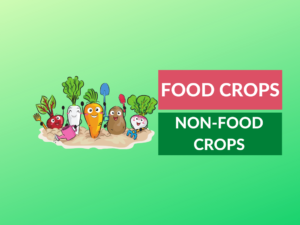What is Alluvial Soil?
Alluvial soil is formed by the deposition of sediments brought by rivers and other water bodies. It typically consists of clay, silt, sand, and gravel. Alluvial soil is known for its high fertility and is found in floodplains, river deltas, and valleys. It is widely used in agriculture due to its ability to retain water and nutrients.
Examples of Alluvial Soil
Some examples of alluvial soils include the Gangetic Plains in India, the Nile River Basin in Egypt, and the Mississippi River Basin in the United States.
Uses of Alluvial Soil
Alluvial soil is highly suitable for agriculture and is extensively used for farming purposes. It is particularly suitable for growing crops such as rice, wheat, jute, sugarcane, and vegetables. Its excellent moisture retention properties make it ideal for irrigation.
What is Black Soil?
Black soil, also known as regur soil or black cotton soil, is a type of soil that is dark in color and contains a high percentage of clay. It is formed from volcanic activity and is found in regions with a hot and dry climate. Black soil is highly fertile and can hold moisture well.
Examples of Black Soil
Some examples of black soil include the Deccan Plateau in India, the Prairie region in the United States, and the Pampas region in Argentina.
Uses of Black Soil
Black soil is considered one of the best soils for agriculture. It is used for growing a variety of crops such as cotton, tobacco, wheat, soybeans, and millet. The high clay content in black soil helps in retaining moisture, making it suitable for dryland farming.
Differences Between Alluvial Soil and Black Soil
| Difference Area | Alluvial Soil | Black Soil |
|---|---|---|
| Formation | Formed by the deposition of sediments by rivers and water bodies | Formed from volcanic activity |
| Color | Varies from light gray to dark brown | Black or dark brown |
| Texture | Consists of clay, silt, sand, and gravel | High clay content |
| Fertility | Highly fertile | Highly fertile |
| Moisture Retention | Good moisture retention | Excellent moisture retention |
| Geographical Distribution | Found in floodplains, river deltas, and valleys | Found in regions with hot and dry climate |
| Agricultural Uses | Suitable for growing rice, wheat, jute, sugarcane, and vegetables | Suitable for growing cotton, tobacco, wheat, soybeans, and millet |
| Water Holding Capacity | Good water holding capacity, but lower than black soil | Excellent water holding capacity |
| pH Level | Slightly acidic to neutral | Neutral to alkaline |
| Organic Matter Content | Medium to high | Medium to low |
Conclusion:
In conclusion, alluvial soil and black soil have several differences. Alluvial soil is formed through the deposition of sediments by water bodies, while black soil is formed from volcanic activity. Alluvial soil is found in floodplains and river deltas, while black soil is found in regions with a hot and dry climate. Despite these differences, both types of soil are highly fertile and suitable for agriculture.
People Also Ask:
1. What is the main difference between alluvial soil and black soil?
The main difference between alluvial soil and black soil lies in their formation. Alluvial soil is formed through the deposition of sediments by water bodies, while black soil is formed from volcanic activity.
2. Which crops are suitable for cultivation in alluvial soil?
Alluvial soil is highly suitable for cultivation of crops such as rice, wheat, jute, sugarcane, and vegetables.
3. Where can black soil be found?
Black soil can be found in regions with a hot and dry climate. Some examples include the Deccan Plateau in India, the Prairie region in the United States, and the Pampas region in Argentina.
4. What is the pH level of alluvial soil?
The pH level of alluvial soil ranges from slightly acidic to neutral.
5. Which factors make black soil suitable for agriculture?
Black soil is highly suitable for agriculture due to its high fertility, excellent moisture retention capacity, and ability to hold nutrients. Additionally, its high clay content helps in retaining moisture, making it suitable for dryland farming.



